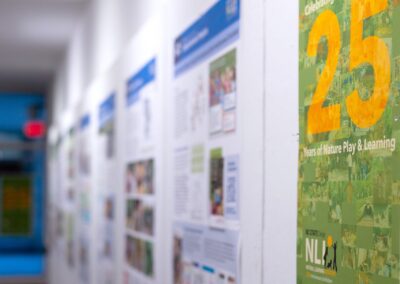
NLI 25th Anniversary Exhibition – Rooting Childhood in Nature
The NLI 25th Anniversary Exhibition, held October 21-31, 2025, in the Brooks Hall Gallery at NC State University’s College of Design, ... read more
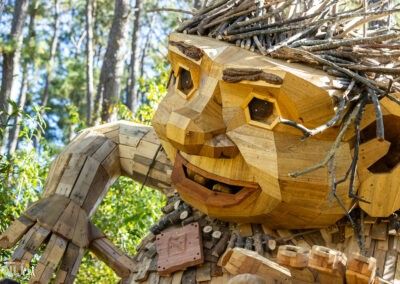
Trolls Take Root at Dix Park
A family of giant trolls has made Dix Park their new home—and they’re here to spark imagination and inspire care for the earth. Hidden ... read more
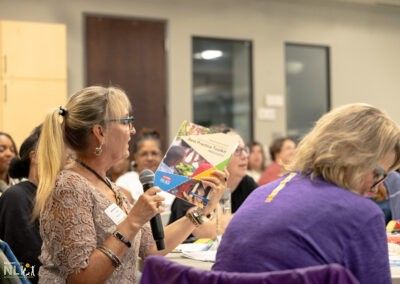
DCDEE Annual Statewide Gathering at the NC Zoo
On September 24, 2025, early childhood leaders and partners gathered at the NC Zoo in Asheboro for the Division of Child Development ... read more

Children’s Health & Nature Connectedness
New research articles about the declining health of U.S. children and the loss of “nature connectedness” in the U.K., simultaneously ... read more
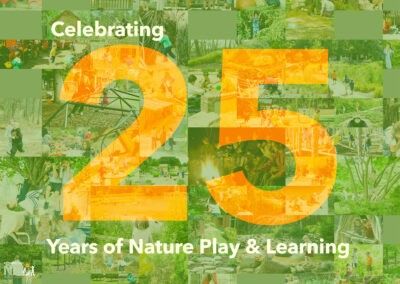
18th NLI Design Institute and 25th Anniversary Celebration!
Rooting Childhood in Nature Webinar Series.Rooting Childhood in Nature continues the 25th Anniversary Institute & Exhibition theme ... read more
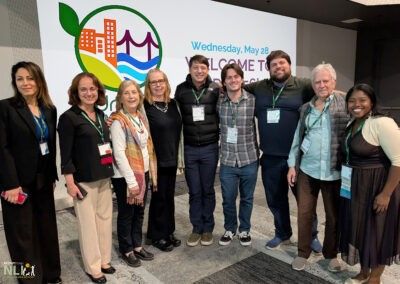
NLI at EDRA 56: Communicating Interdisciplinary Research-Based Design
The Natural Learning Initiative (NLI) participated in EDRA 56 with a substantial group of College of Design colleagues. NLI showcased ... read more
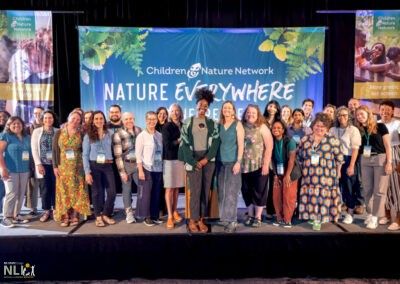
Children & Nature Network 2025 – Nature Everywhere Conference
“Nature Everywhere” 2025 Conference Organizing CommitteeThe 2025 Nature Everywhere Conference, held from May 13–16 at the RiverCentre ... read more

Gipson Play Plaza – Dix Park – Grand Opening
Gipson Play Plaza (GPP) On June 6, GPP opened as the first major investment and iconic, welcoming entrance to Raleigh’s 308-acre Dix ... read more
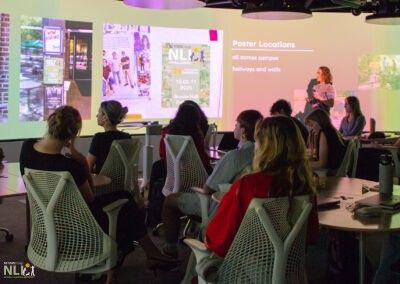
NLI Sponsors a Creative Studio Experience
Group photo in the Hunt Library visualization lab after successful proposal presentationsThis semester, Victoria Chi’s freshman studio ... read more
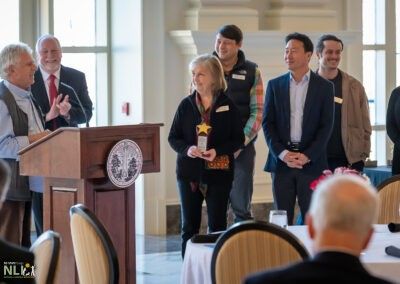
NLI receives the NC State 2025 Opal Mann Green Engagement and Scholarship Award!
Pictured from left to right are: Robin Moore; David Monks, PhD, Vice Provost for Extension and Engagement; Nilda Cosco, PhD; Matt ... read more

Celebrate Earth Day 2025
On NLI’s 25th Earth Day, we invite you to celebrate nature’s lowly childhood friends: buttercups, daisies, dandelions, and – ... read more
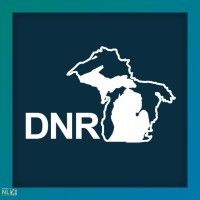
NLI Delivers Webinar with Michigan DNR
Quick Links:Broadcast Date:December 16th 2024 6:30pm ESTNLI Webinar hosted by Michigan DNR-Parks and Recreation Division ... read more
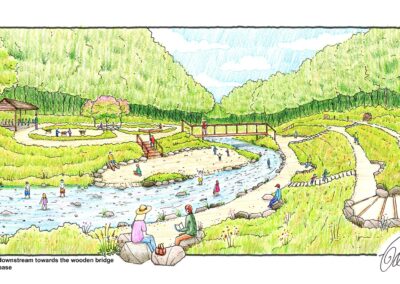
Ross Park Zoo: Creekside Play and Learning Center update
We are excited to announce that NLI’s Ross Park Zoo partners, Bingamton NY, have been awarded $300,000 from a local foundation to ... read more

The NLI Website Becomes Multilingual
We’re thrilled to expand our global reach and make our resources more accessible than ever with the new GTranslate plugin on our ... read more
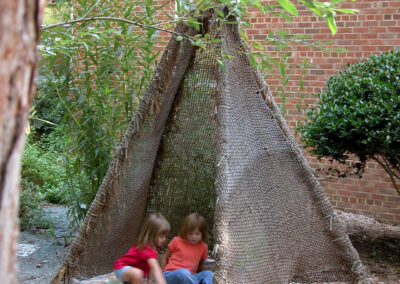
From Teepee to Conical
“Conical” is the new name adopted by NLI because of cultural appropriation issues, for conical structures installed in children's ... read more
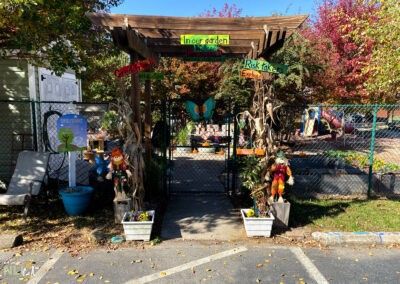
Gathering & Tour: DCDEE North Central Region
As part of the two-year project, Supporting Naturalized Outdoor Play and Learning Environments in North Carolina Child Care ... read more
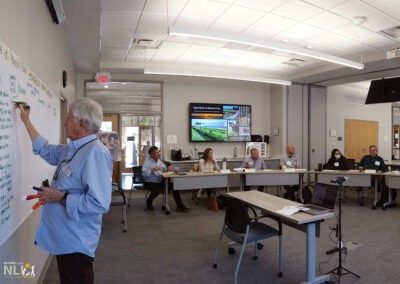
NC Solar Farm: Agrivoltaics Project
Agrivoltaics Background With the adoption of a recent Climate Action Plan, Orange County, North Carolina, intends to deploy strategies ... read more
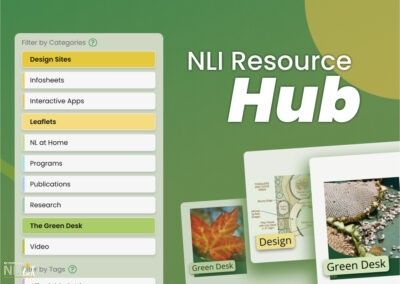
The NLI Resource Hub: A New Tool for Educational Resources
In an ongoing effort to enhance the accessibility and impact of our educational materials, the Natural Learning Initiative (NLI) has ... read more

Kids Together Playground Interactive Virtual Tour
Kids Together Playground, a universally-designed, family recreation space in Cary, NC, opened in 2000, designed by NLI’s Robin Moore ... read more
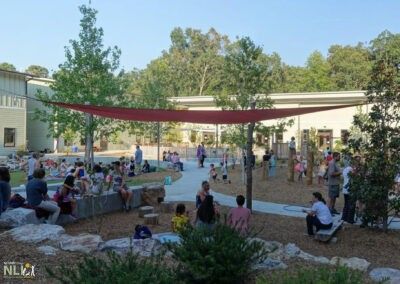
Yale Climate Connections Podcast
The Yale Center for Environmental Communication recently featured NLI’s Robin Moore in their Climate Connections radio program on the ... read more
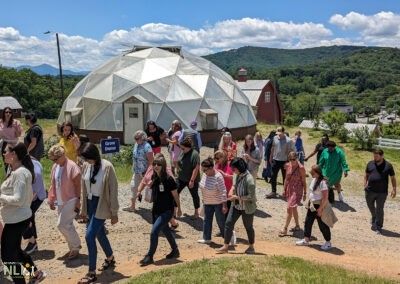
NLI Hosts DCDEE Regional Meetings
A statewide kickoff webinar introducing the two-year project, Supporting Naturalized Outdoor Play and Learning Environments in North ... read more
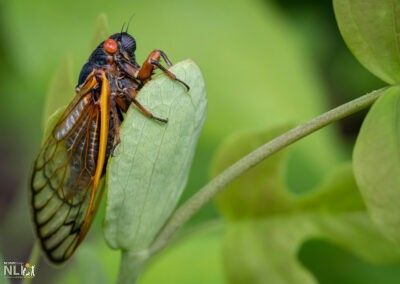
North Carolina Welcomes the Emergence of 13-Year Cicadas
The emergence of 17-year and 13-year cicadas in the Eastern US is currently captivating the attention of nature enthusiasts. Here in ... read more
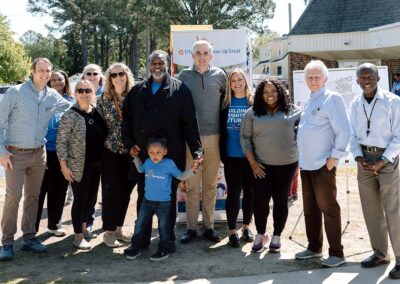
NLI Joins 20th Anniversary Celebration of Grow Up Great
NLI celebrated the 20th Anniversary of the PNC Foundation’s signature Grow Up Great program with a grant announcement ceremony at ... read more
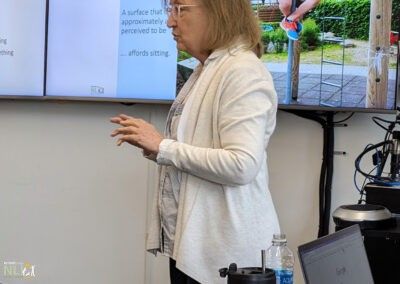
NLI-ECHO (Early Childhood Health Outdoors) Training Workshop
NLI conducted a 3-day training workshop in early April with the Grow Outdoors SC (South Carolina) ECHO (Early Childhood Health ... read more
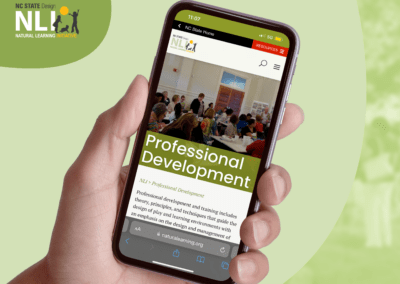
The NLI Website’s New Look
You may have noticed some changes to the NLI website… We are proud to unveil a new, modern style designed to provide clear and legible ... read more
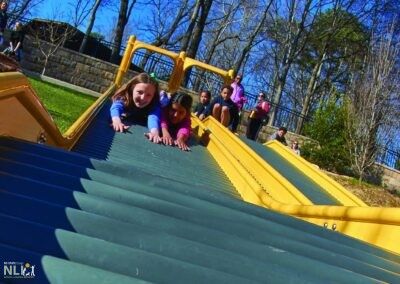
Play Chastain
ProjectPlay Chastain was part of the 20-year Master Plan for Atlanta’s Chastain Park. As a member of the design team, with Harrison ... read more
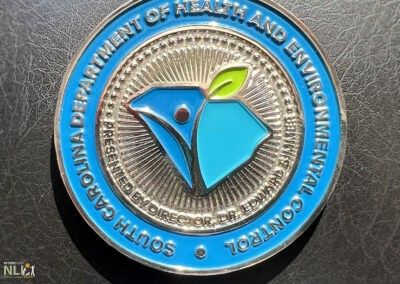
NLI Receives DHEC Appreciation Coin
NLI Receives DHEC Appreciation Coin Presented to NLI by Agency Director, Dr. Simmer Recognizes partners addressing the health and ... read more

NC Crunch
NC Crunch this Fall celebrated NC Farm to School and Early Care and Education Month by hosting events at more than a dozen Wake County ... read more
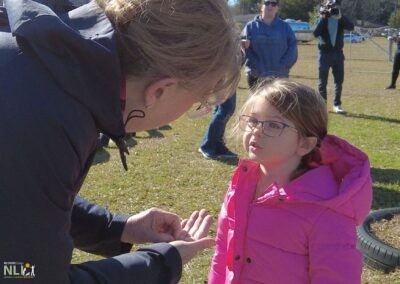
Grow Outdoors South Carolina Launch
Grow Outdoors SC, launched at the MEGA Child Development Center, Gilbert, SC (12-11-23), is a unique partnership of two SC state ... read more
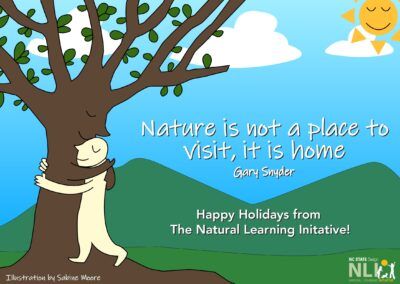
Happy Holidays 2023
Happy Holidays from the Natural Learning Initiative! Join us as we celebrate nature play and learning with our holiday postcard. read more

Supporting Naturalized Outdoor Play and Learning Environments in North Carolina Child Care Facilities
During the Fall of 2023, NLI collaborated with Horticultural Science, NC State, to implement nature-based design interventions in ... read more
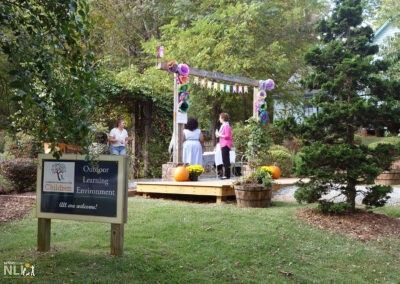
OLE at Glencoe Mill Village
ProjectThe Outdoor Learning Environment in Glencoe Mill Village Historic District, Burlington, NC, was initiated by the Alamance ... read more
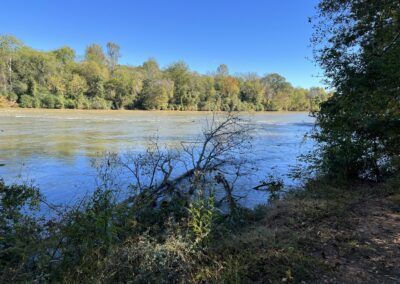
The Catawba Nation iswa Early Learning Center
ProjectThe Catawba Nation, iswa Early Learning Center is working with NLI to naturalize their outdoor play and learning environment ... read more
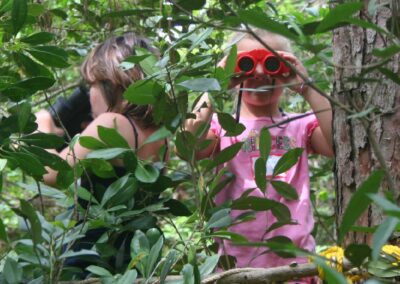
North Carolina Division of Child Development Early Education
In 2011, Creating a Supportive Network was successfully implemented in North Carolina as a collaborative project of the North ... read more

Children’s Rights to a Healthy Future
Children’s right to a healthy future made historic progress in August 2023 when a group of Montana youth won a case re-affirming ... read more

NLI’s Community of Interest
Thank you for taking part in NLI’s “community of interest” (COI) by subscribing to the Natural Learning Initiative Newsletter and ... read more

Texas Tech Colleague Wins 2023 ASLA Student Award of Excellence in Research
NLI Colleague Nazia Afrin Trina, MLA Student at Texas Tech University, was the recipient of the Award of Excellence in the Research ... read more
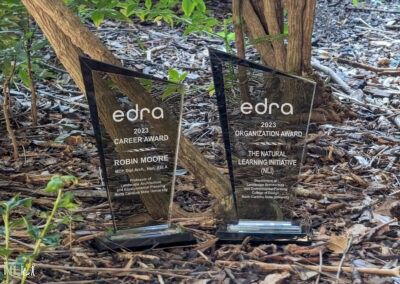
EDRA Awards 2023
The 2023 Environmental Design Research Association (EDRA) Career and Organization Awards go to Robin Moore and the Natural Learning ... read more
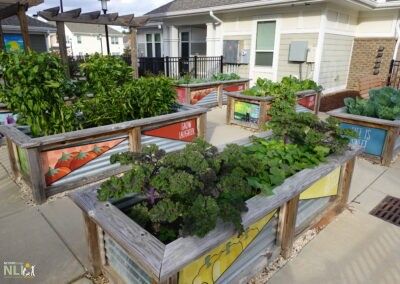
Design interventions at Washington Terrace (WT)
Design interventions at Washington Terrace (WT), a 23-acre, rebuilt neighborhood in East Raleigh’s historic African American ... read more
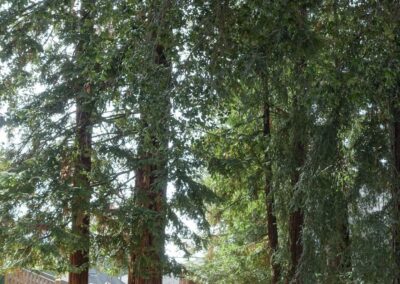
The future is a playground – Washington Post Article
NLI’s Robin Moore was recently cited in a Washington Post article on the future of playgrounds. The article highlights several play ... read more
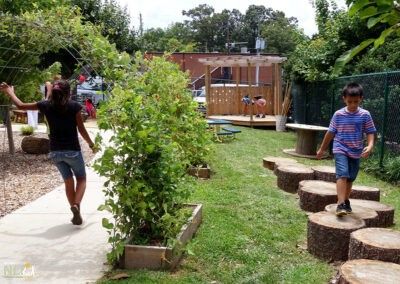
Nemours Children’s Health Healthy Kids, Healthy Future Technical Assistance Program Convening 2023
NLI attended a virtual convening hosted from June 6-7 by the Nemours Children’s Health National Office of Policy and Prevention. This ... read more
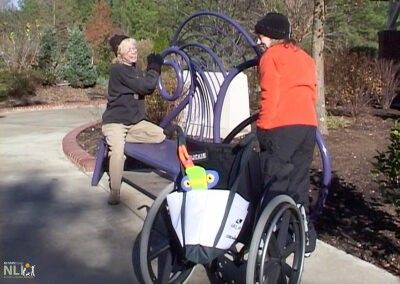
Kids Together Playground
ProjectKids Together Playground (KTP), designed by Robin Moore with Little and Little Landscape Architects, opened coincident with NLI ... read more

Texas Tech Colleague Wins Poster Competition
Nazia Afrin Trina wins first place in the Graduate Student Poster Competition organized by the Texas Tech University Obesity Research ... read more

Earth Day 2023
“EVERYTHING SHOULD HAVE NATURE” was a World Environment Day message from an 11-year-old for the International Year of the Child ... read more
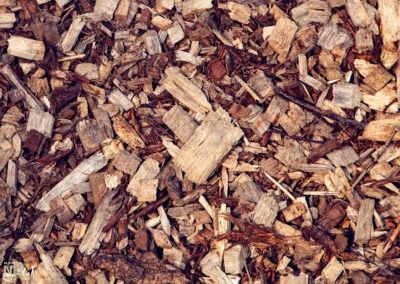
Free Wood Chips!
Local arborist companies often provide free wood chips from trees they trim to anyone in the area who requests them.Chips may include ... read more
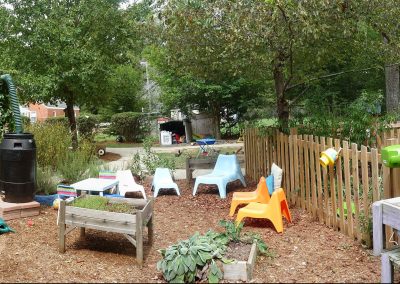
Start Small–With A Vision
Kim Shaw will be giving a Keynote at Antioch University during the In Bloom ConferenceEducators observe children’s affinity to be ... read more
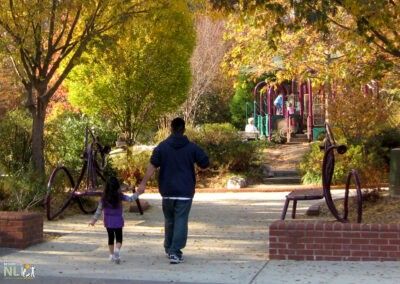
NLI’s Early Childhood Professional Development Program on a roll!
In 2022, NLI offered five Early Childhood Outdoor Learning Environments courses to designers and educators. The 170+ participants left ... read more

Buenos Aires Ecological Reserve
The regenerative power of nature continues to inspire NLI’s passion for restoring biodiversity to hundreds of patches of dirt to ... read more
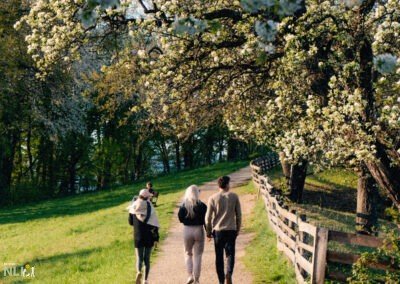
Need and Interest in Nature Prescriptions to Protect Cardiovascular and Mental Health
A Nationally-Representative Study With Insights for Future Randomised TrialsNLI Director, Dr. Deepti Adlakha worked alongside ... read more
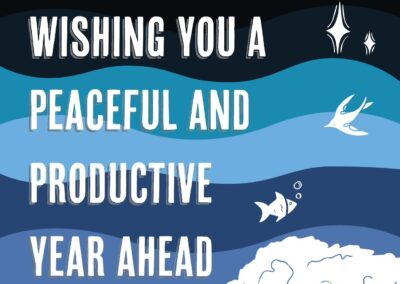
Happy Holidays 2022
Happy Holidays from the Natural Learning Initiative! Join us as we celebrate nature play and learning with our holiday postcard. read more
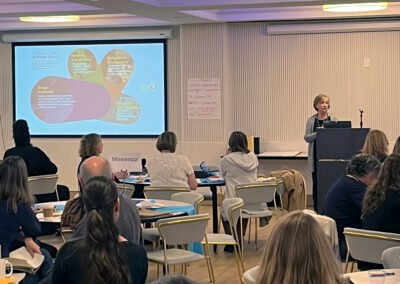
Where are the Bacon Seeds?
This preschooler quote introduced Dr. Nilda Cosco’s closing keynote to the Association of State Public Health Nutritionists (ASPHN). ... read more
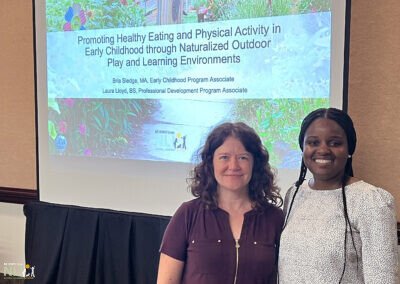
NLI session at the 2022 NC Extension State Conference
NLI presented a session led by Laura Lloyd and Bria Sledge at the 2022 Extension State Conference, Greensboro, NC, in October 2022. ... read more
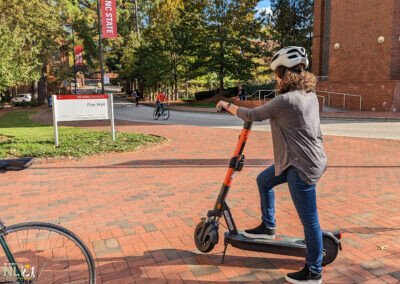
Micromobility Research with SPIN
NLI Director Deepti Adlakha has been awarded a research contract to study micromobility across the NCSU campus alongside fellow ... read more
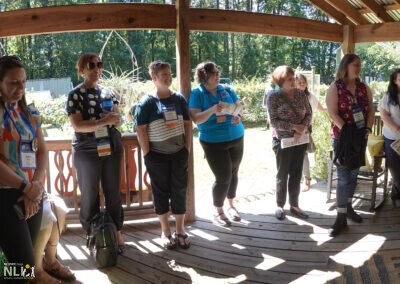
NLI at the NEAFCS Annual Session
Mid-September, enthusiastic cooperative extension professionals, interested in early childhood gardening and healthy eating toured the ... read more
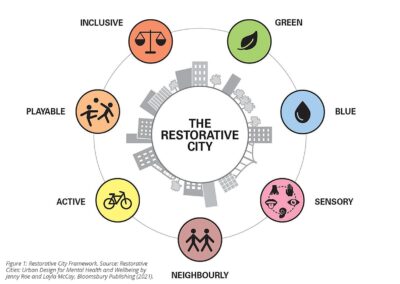
Deepti Adlakha at Restorative Cities + Urban Mental Health Roundtable
NLI Director, Dr. Deepti Adlakha, was a panelist at the University of Virginia, School of Architecture’s Restorative Cities + Urban ... read more

Children Who Play in Forests and Parklands Rather Than Gravel Yards Have Stronger Immune Systems
Finnish researchers added greenery and soil to daycare outdoor play areas.Findings Children got an immune boost and more diverse ... read more
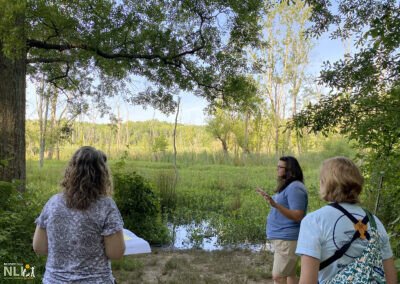
Conestee Nature Preserve: Nature Playscape
ProjectPhoto Credit: Brandon DupreeThe new Nature Playscape at Conestee Nature Preserve, Greenville, SC, opened to swarms of excited ... read more
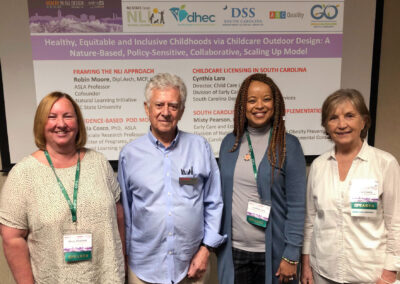
Healthy Childhoods via Childcare Outdoor Design
NLI and SC partners presented at Health in All Design, the 53rd Environmental Design Research Association Conference (EDRA), ... read more
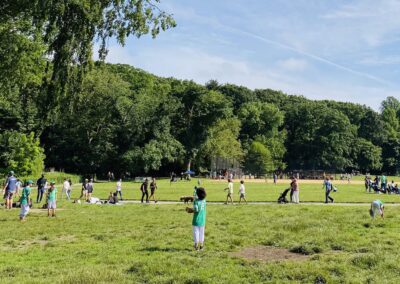
Social Media Mining to Inform Park Use and Public Health Decision-Making
Research Question: Are tweets about parks and public health a valid source of data to inform practitioner decision-making about ... read more
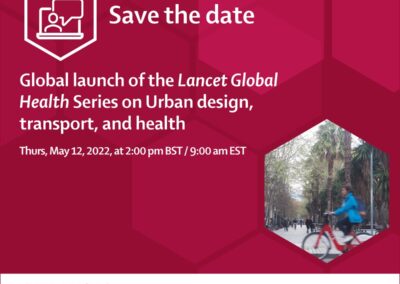
Deepti Adlakha Research Published in Lancet Global Health Series
NLI Director, Dr. Deepti Adlakha's latest research work was published as The Lancet Global Health Series on Urban Design, Transport ... read more

Biophilic Design of Biotopes
Thank you for visiting NLI to further explore topics presented in the Moore and Cosco interactive poster Creating Biotopes as ... read more
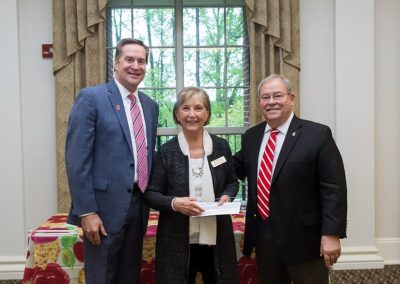
Nilda Cosco Honored with Multiple Awards
Dr. Nilda Cosco, Research Associate Professor, Landscape Architecture and Environmental Planning, Director of Programs, Natural ... read more
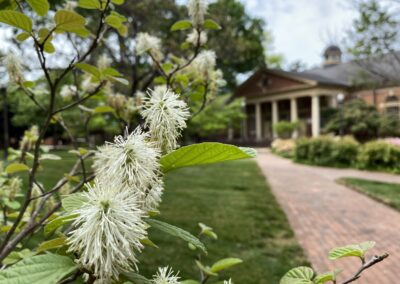
Caring for our home in the Universe: Earth Day 2022
Join NLI in celebrating Earth Day 2022! Take time to tune into nature. Think of new ways to care for our planet. Be inspired by the ... read more
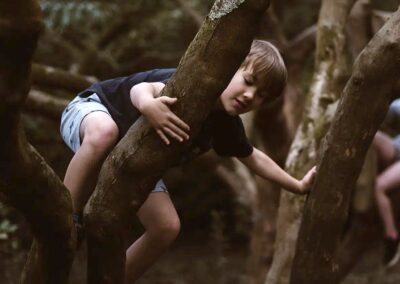
Healthy Kids: No Batteries Required
In a journey of discovery spanning six decades, Robin Moore has explored the connections between human development and the natural world. His ideas may hold the key to raising healthy children in the digital age. read more
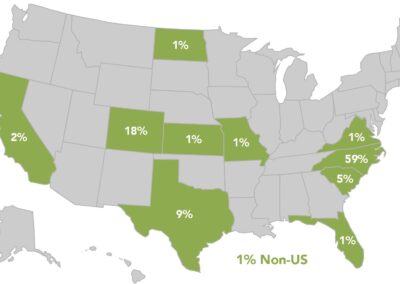
Certificate Course Participant Survey Results 2022
The NLI Professional Development Team surveyed past participants of the Early Childhood Outdoor Learning Environments Certificate to ... read more

Moore Montessori Community School (MMCS) teacher workshop
ProjectMMCS is a public charter school serving Moore County, North Carolina. The design-programming workshop led by Robin Moore and ... read more
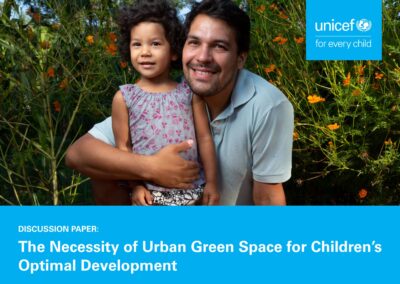
The Necessity of Urban Green Space for Children’s Optimal Development
“Green spaces can significantly benefit children’s physical, mental and social development – from infancy into adulthood,” according ... read more
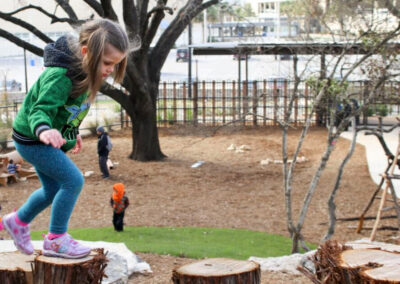
Cari Browning from Department of State Health Services (DSHS) talks About OLE! Texas
On April 6th Cari Browning sat down with Sarah Coles, Texas Children in Nature Network Executive Director, to talk about the OLE! ... read more

Designing School Grounds to Integrate Nature, Learning, and Health
Children and youth have a legal obligation to attend school. School environments, especially public ... read more
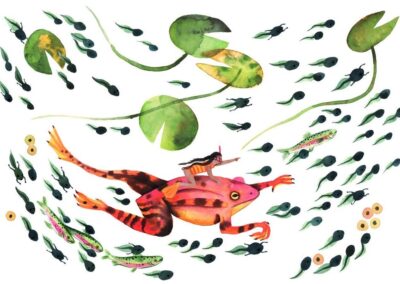
Earth Day 2021
Join us in celebrating Earth Day! It is a great opportunity to pause and enjoy nature as we ponder new ways to take care of our ... read more

Robin Moore, NLI Director, is honored by NC State University and the U.S. Play Coalition
Robin is a recipient of the 2020-2021 Alexander Quarles Holladay Medal for Excellence, the highest academic honor bestowed by the NC ... read more

Happy Holidays! 2020
Happy Holidays from the Natural Learning Initiative! Join us as we celebrate nature play and learning with our holiday postcard. read more
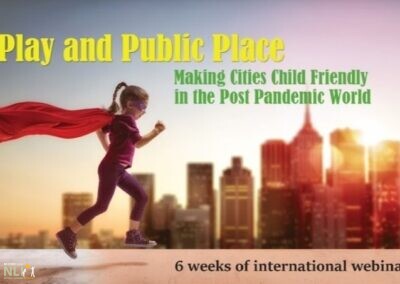
Play and Public Place: Making Cities Child Friendly in the Post Pandemic World
Happy Earth Day! Check out these activities that you can do at home to celebrate. read more
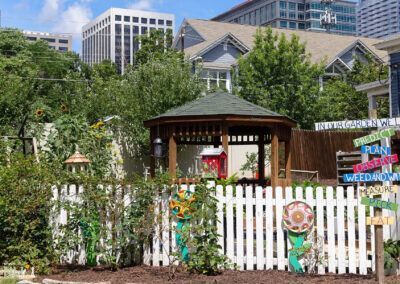
Rethink Outside: Getting Kids Outdoors as Early as Possible
POD provides landscape design seed money and teaches childcare center owners how to create learning environments that pull teachers and students outdoors. read more
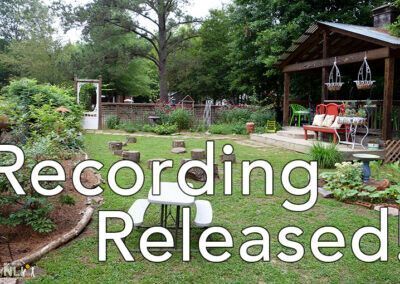
Let’s Go Outdoors! Webinar
A conversation about childcare outdoor play and learning during the pandemic. read more

Oakland Declaration
The Nature-Based Learning Network gathering at the Children & Nature Network International Leadership Summit provided an opportunity to create an international declaration on nature-based learning. read more
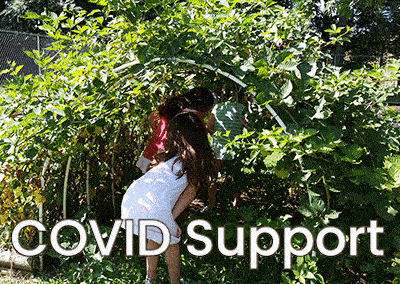
COVID Support we’re all in this together!
Early childhood outdoor play and learning resources. read more

Earth Day!
Happy Earth Day! Check out these activities that you can do at home to celebrate. read more

20th Anniversary NLI Design Institute
We are happy to announce that the Design Institute will be held virtually on March 25-26, 2021. read more
Happy Holidays! 2019
Happy Holidays from the Natural Learning Initiative! Join us as we celebrate 20 years of nature play and learning with our Christmas postcard. read more
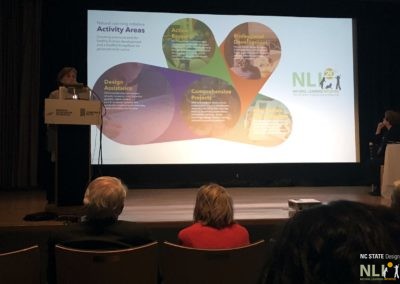
2019 Nordic Symposium
Nilda Cosco, PhD, Director of Programs at the Natural Learning Initiative participated in the 2019 Nordic Symposium that took place at the Sarah Lawrence College from April 5-6. read more
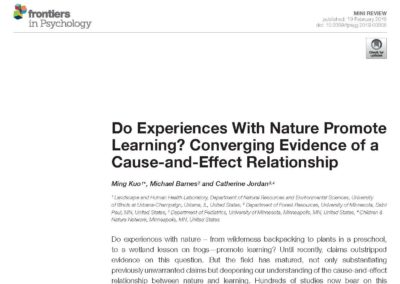
Nature-Based Learning Literature Review published
Nature-based learning is supported by up-date-scientific evidence in a recent literature review in Frontiers in Psychology. read more

Lunchbox Talk: Contact with Nature = Healthy Child Development
Join NLI's Nilda Cosco and Robin Moore at the NC Botanical Garden on April 25th for their Lunchbox Talk about how being in contact ... read more
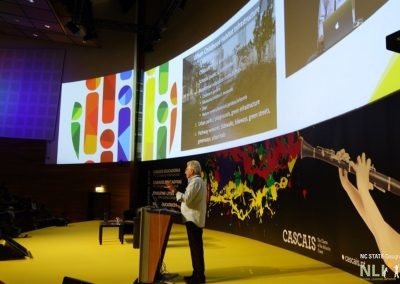
Moore and Cosco presented at the 15th International Congress of Educating Cities, Cascais, Portugal
Join NLI's Nilda Cosco and Robin Moore at the NC Botanical Garden on April 25th for a Lunchbox Talk about how being in contact with ... read more
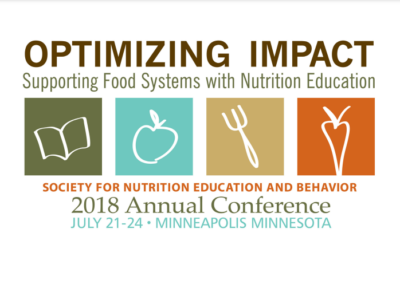
Dr. Nilda Cosco presents poster at the Society for Nutrition Education and Behavior annual conference, Minneapolis, July 2018
USDA COLEAFS is a five-year investigation (RCT) of gardening by 3-4 year olds attending childcare centers to assess its impact on ... read more
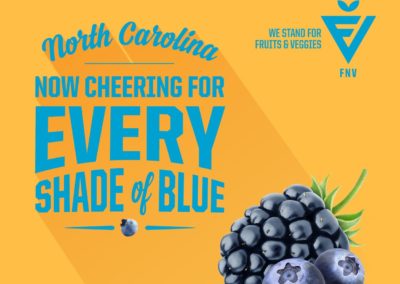
Proud to support Blue Cross NC as they bring TeamFNV to NC!
The Natural Learning Initiative is proud to support Blue Cross NC as they bring TeamFNV to NC! Excited to spread the love for fruits ... read more
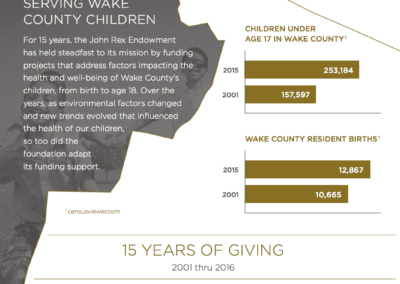
John Rex Endowment 2016 Progress Report
The John Rex Endowment 2016 Progress Report is a glimpse of the foundation’s impact on the Wake County community over the past 15 ... read more
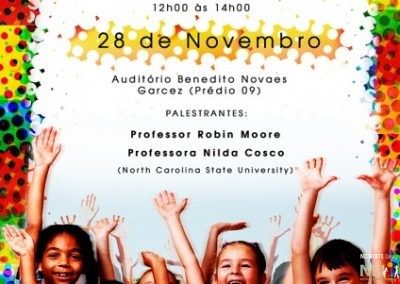
Presentation at Mackenzie Presbyterian University in São Paulo, Brazil
The Natural Learning Initiative's Robin Moore and Nilda Cosco presented on Designing for the Next Generation of Planetary ... read more
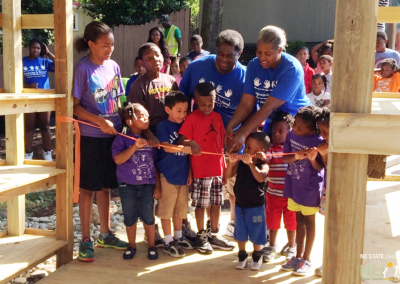
Sir Walter Raleigh Award – Public Service
Beginning and Beyond Child Development Center, participant of the Preventing Obesity by Design (POD) project, along with ... read more


